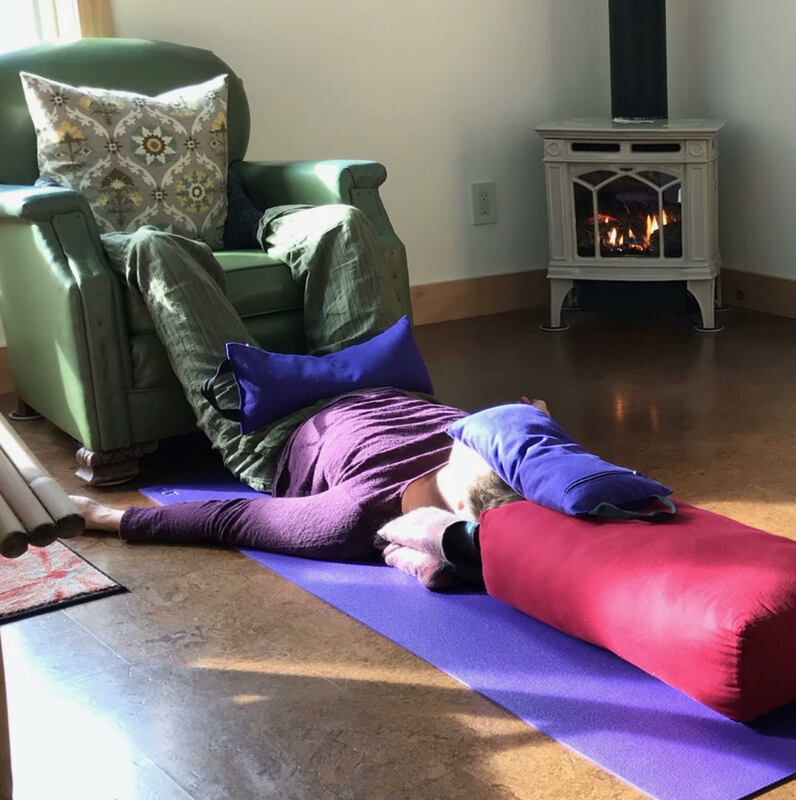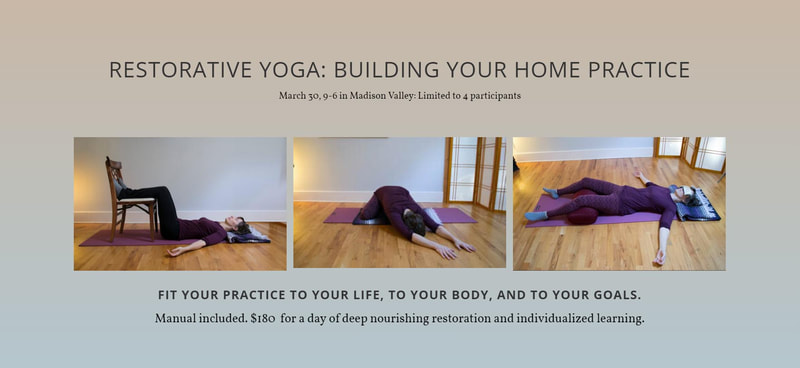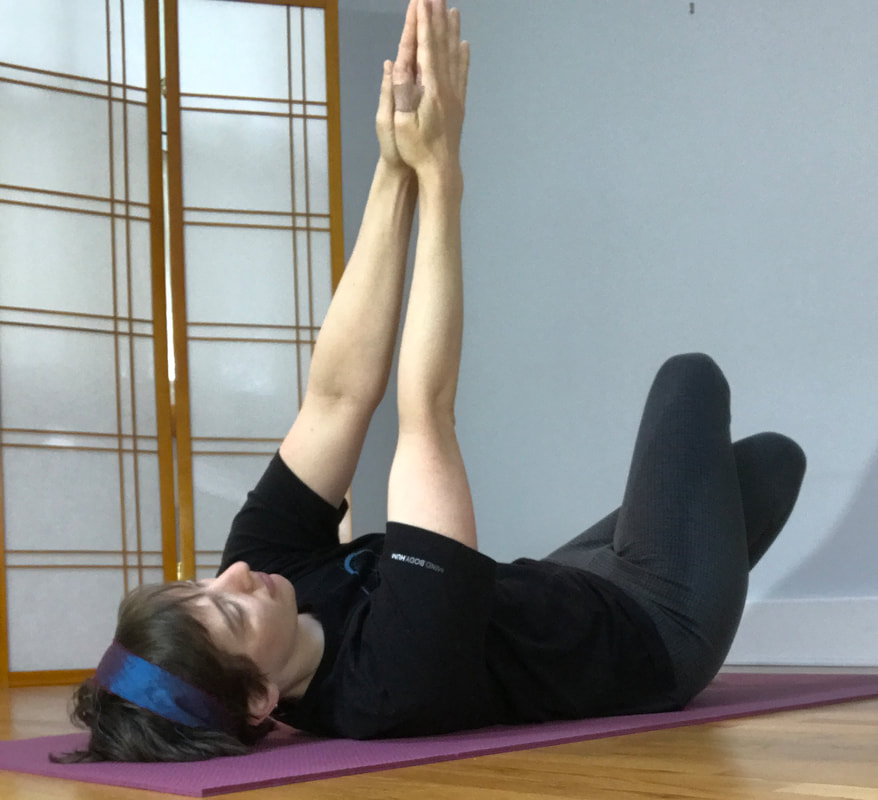|
I am very fortunate to be able to stop everything.
So, I did. And I practiced finding quiet. Listening to the underneath, the thoughts and emotions that are so easy to set aside in daily life, to quash, or to ignore. When ignored, emotions can become stuck, can sour. I was feeling so out of sorts, grumpy, and had not painted since January, but for a few sketches. It was like a little girl inside me was stamping her foot: "STOP" she said. And eventually I listened. Movement is one of the ways to work with emotion, not to deepen and exaggerate it, or to dwell in the stories that emerge, but simply to see it, and experience it in the body. In yoga, we often talk about meeting ourselves on the mat as we are, with acceptance for our bodies as they are. Sometimes, it feels like we say that, but then we push to meet some goal, to change ourselves. Yet, if we really do see and accept ourselves as we are, then change becomes a possibility. It entirely depends on us to actually do the first step: really to accept and witness ourselves as we are. Otherwise, our actions are in conflict with our needs. Its like we've been driving down a road, but we got lost. How do you go anywhere from a place of being lost? You can try, but where will you wind up? Yet, given a map, if you know your location, then step by step you can move towards your intention. Sometimes, we pretend we aren't lost, or we know we are lost, and keep going anyway. That's part of the process too. Both Restorative Yoga and Feldenkrais are opportunities to create an inner map to our relationship with stillness, with our bodies, with pain, with comfort. They are ways to have a deep conversation rooted in compassion and honesty. For me, these can be ways to meditate with and in the body in a way that honors my whole self, that teaches me to meet myself with neutrality and create ease. This is why I practice, this is why I teach.
0 Comments
Errol Flynn, the movie star from the 30s and beyond, was trained to fence, and while his lifestyle might not teach us much about yoga, learning to reach effectively, from the spine, using the ribs, well that's a skill many yogis don't know they are missing. Watch the shape of Flynn as he dances up the stairs--Warrior Two anyone? What makes his stance powerful, and his thrust powerful, is his connection to the earth, the way he utilizes gravity to push up through his bones, his pelvis, into the spine, and directs the energy out the tip of his sword. He is not static, and yet, he can be still. He is at ease, and that ease results in quickness. What if we were so easy and soft through the ribs that they became a true transmitter for the force generated by our legs, hips, spine? How would that change the way we reach out to the world, grounded in our own sense of self? How does the very physical act of being both stable, and instantly movable, change our way of relating with others? For me, to be truly connected to the earth, to be able to be at ease within--physically, and able to reach effectively out while not being pulled off balance: that is to be truly aligned with my inner intuition. Yoga, union, is to be really one with myself, body-mind-spirit. Doing the subtle practices of Feldenkrais lessons, one-to-one, or on my own, or in class, have taught me the places that I didn't know I was not inhabiting. This has effected my yoga practice, the way I dance, and surprisingly, the way I communicate with others. Explore the Thoracic Spine, and see how it impacts everything--as above, so below... Tuesday 7-8pm Drop in 15-20 sliding scale. A Brief Exploration of the relationship between our eyes and neck, based on the work of Moshe Feldenkrais. Sense the relationship between the way you use your head in turning, the way you move your eyes. This is very personal, and although we all have a connection, how you move your head is dependent on your work, your development, even on culture. This exploration will help you sense your patterns, and possibly free you just a little bit. Enjoy. Closed Captioned for ease of use and accessibility. Please be mindful to only work in comfort. Pain does not cause gain in this way of working and sensing yourself. Pain is useful in knowing when to stop, and what some of your habits are. If you experience pain, back off, breathe. Do less. |
AuthorHeather Emanuel, is a Guild Certified Feldenkrais Method® Practitioner, Assistant Trainer, LMT, and Awareness Through Movement® facilitator. She also teaches Restorative Yoga. Free and subscription classes also are on PATREON.
As an artist, she has won accolades for her playful portraits. These days, she's pouring her creativity into her Feldenkrais work. Just as her art explores expression, playfulness, identity, and the possible, so do her movement sessions. Her art CV is here. Recorded classes on Patreon for free or a small subscription. Archives
January 2024
Categories
All
|
Heather Emanuel, GCFPSchedule Appointment
|
|





 RSS Feed
RSS Feed